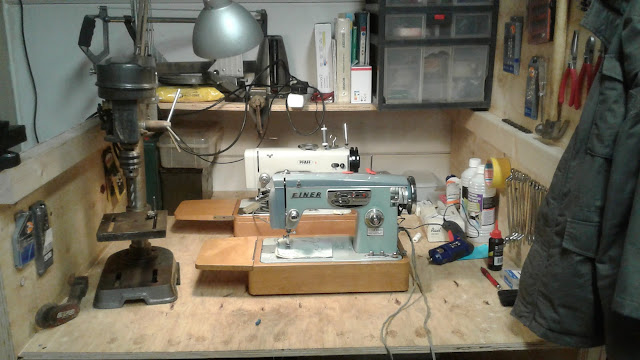At a local thrift shop I found a whole rack full of older sewing machines. I selected the best two and brought them home.
The prettiest machine here must be the Einer. It is a fetching shade of "Duck egg" blue and has several intricate dials and knobs. I think these are typical of Japanese machines of that era. Probably early sixties.
Despite the very German sounding name the letter J tells us the Einer was built in Japan.
These wonderful chrome buttons move the feed dogs up or down
Rotary dial ro adjust the stitch length and if you press the R-button the machine reverses.
These controls are for the zig zag and needle postion.
Chrome script fit for a classic car.
Lifting the "hood" reveals a clean and all metal mechanism. The machine works well and shows no signs of wear at all. The outside is just a little dirty, but I'm sure it will clean up well.
This Pfaff 9 is a later and very different machine. Very simple, but also strong.
When I found it I made sure the special metal cleated drive belt was in good condition. Reading the internet it seems no replacements are available at the moment.
Apart from the belt, the machine is a remarkably simple design. It worked perfectly without any oiling or cleaning. The only damage was the broken plastic foot of the twin spool pin.
Both machines came in their factory cases.
For the spool pins I made a metal plate to clamp the metal to the plastic foot.
There it is: ready to sew!

A random selection of posts about travel and tinkering with mechanical machines. Mostly cars from 1937 to 1999, manufactured in English speaking parts of the world, but also kayaks and sewing machines. So here you can see how we travel, drive, paddle, break fix and find on a regular basis. On a desktop, you can choose your favourite item from the list on the right, choose a page from the menu or simply scroll down to see the latest.













